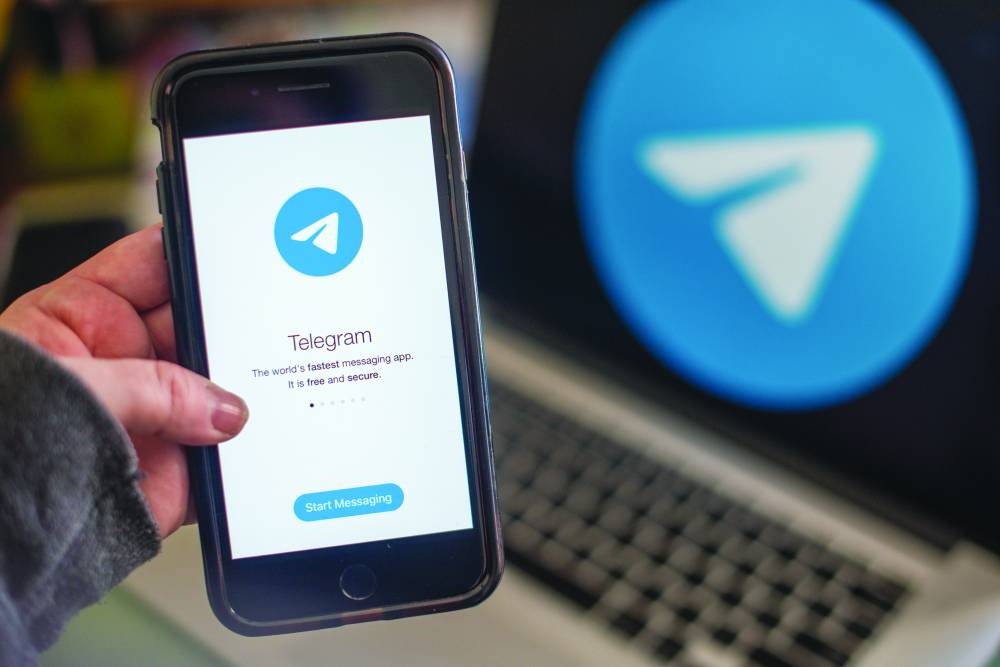One of the top performers in crypto this year is a project with ties to Telegram Messenger LLP, a rival to WhatsApp whose blockchain plans have previously drawn the ire of US regulators.
The Open Network (TON) blockchain has seized the crypto spotlight even amid a broader rally in the sector that saw Bitcoin hit new heights before a recent selloff.
With access to Telegram’s 900mn monthly active users through a partnership, the value of assets locked on TON surged 1,400% this year to briefly top $1bn.
The blockchain’s token has broken into the top 10 by market capitalisation after roughly tripling since January, according to data tracked by DeFiLlama and CoinGecko.
TON’s performance has rekindled hopes that Telegram — long the messaging app of choice in crypto — may evolve into a “super-app” spanning social interactions, gaming and financial tools in the style of Chinese giants like WeChat.
“Telegram is the only major platform that is free of regulatory hurdles to incorporate Web3 for an open blockchain network,” said Pantera Capital Management LP, in a May statement announcing the firm’s largest ever investment — a purchase of TON’s tokens. Pantera didn’t disclose the size of the deal.
Telegram was established in 2013 by Russian brothers Pavel and Nikolai Durov, who after gaining traction raised $1.7bn in 2018 in one of the largest initial coin offerings ever to launch what was then called the “Telegram Open Network.”
The project quickly found itself in the crosshairs of the US Securities and Exchange Commission. By 2020, Telegram had settled with the regulator, agreeing to return the proceeds of the ICO alongside an $18.5mn penalty.
The TON Foundation, which a spokesperson described as a “fork” of the Telegram Open Network, emerged a year later, but is “completely separate” from both the Telegram Open Network and Telegram, they added.
Some are sceptical. While the two entities may be nominally independent, “TON is at this point almost entirely dependent on Telegram, and so practically speaking it seems very unlikely that the network’s operators will make decisions that go against Telegram’s interests,” said crypto researcher Molly White in an emailed response to Bloomberg News.
Telegram said in February this year that it would “exclusively use the TON blockchain” for payments related to a new ad-revenue sharing programme.
Soon after, key metrics for the blockchain veered dramatically upwards. The number of daily active users on TON recently exceeded 350,000, according to TonStat data.
As the world becomes more global and more digital, “these sort of payment solutions that are instant and have nothing to do with borders in terms of slowing things down just look like a killer app,” said Richard Galvin, co-founder and CEO of the crypto investment firm DACM, which purchased TON tokens in a private round in early 2023.
One increasingly burdensome constraint on the growth of crypto apps is Know Your Customer and Anti-Money Laundering checks.
Crypto exchange behemoth Binance’s failure to adequately screen customers was a key focus of US authorities that brought wide-ranging charges against the company last year, a tussle that resulted in a historic $4.3bn settlement and jail time for former CEO Changpeng Zhao.
TON enforced new KYC and AML checks from June 3, requiring users to share their name, date of birth and phone number to continue accessing key wallet features. Before then, users had to provide a national ID for transactions above an unspecified threshold, according to a spokesperson.
The new tiered KYC system — with basic, extended and advanced bands — demands gradually more information from users based on how much they transact.
The service has also been restricted in the US among other jurisdictions since launch, Halil Mirakhmedov, CSO of The Open Platform and Wallet said.
There are signs that payments will soon come to the fore. After an April partnership with Tether, the $113bn stablecoin issuer, usage of USDT on TON has risen to over $550mn, according to DeFiLlama data.
While the early appeal of the blockchain was more centred on gaming and decentralised finance, “going forward we see more use cases around payments and remittance,” said Cosmo Jiang, portfolio manager at Pantera.
DACM’s Galvin sees consumer-facing platforms underpinned by blockchain software as the key growth area in crypto over the next three years. TON, which according to Mirakhmedov aims to capture a full third of Telegram’s user base by 2028, may fit the bill.

The Telegram Messenger app on a smartphone. One of the top performers in crypto this year is a project with ties to Telegram Messenger, a rival to WhatsApp whose blockchain plans have previously drawn the ire of US regulators.
